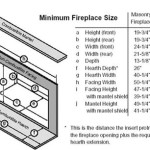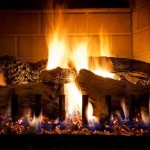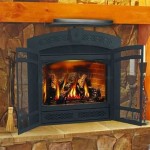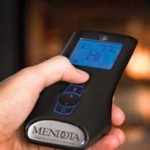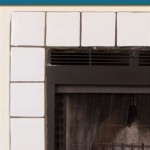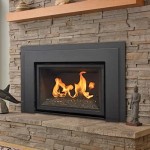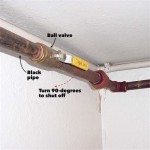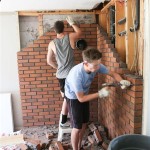Cost To Add A Fireplace: A Comprehensive Guide
Adding a fireplace to a home can significantly enhance its aesthetic appeal and create a cozy atmosphere. However, before embarking on this project, it is crucial to understand the various costs involved. The total cost to add a fireplace varies widely depending on several factors, including the type of fireplace, fuel source, installation complexity, and geographical location. This article provides a comprehensive overview of the cost factors associated with adding a fireplace, broken down by type and potential challenges.
Understanding Fireplace Types and Associated Costs
The type of fireplace chosen is a primary determinant of the overall cost. There are several common fireplace types each differing in price range, installation requirements, and operational expenses. These include wood-burning, gas, electric, and ethanol fireplaces.
Wood-Burning Fireplaces: Wood-burning fireplaces are often considered the traditional choice, evoking a sense of rustic charm and providing authentic ambiance. The cost for a wood-burning fireplace installation can range significantly. A prefabricated wood-burning fireplace insert can cost between $2,000 and $6,000, including installation. This option involves inserting a metal firebox into an existing masonry fireplace or constructing a new chimney system. The chimney itself is a substantial cost factor, potentially ranging from $4,000 to $10,000 depending on the height, materials used (brick, stone, or metal), and the complexity of the installation.
Masonry fireplaces, built from brick or stone, are more expensive, generally ranging from $5,000 to $20,000 or even higher for custom designs. These require specialized labor and significant construction. Operating costs associated with wood-burning fireplaces include the cost of firewood, which can vary based on location and the type of wood purchased. Regular chimney cleaning is also necessary to prevent creosote buildup and reduce the risk of chimney fires, costing between $150 and $300 annually.
Gas Fireplaces: Gas fireplaces offer convenience and ease of use, with the ability to ignite and extinguish the fire with the flip of a switch or the press of a button. They also offer consistent heat and require less maintenance than wood-burning fireplaces. The cost for a gas fireplace installation generally ranges from $2,500 to $8,000, including the fireplace unit and installation costs. The price varies depending on the size, style, and features of the fireplace, such as remote control operation and variable flame height.
A significant portion of the cost involves running a gas line to the fireplace location. This can require additional plumbing work, especially if the gas line needs to be extended from the main gas supply. The cost of running a gas line can range from $500 to $2,000 or more depending on the distance and complexity of the installation. Gas fireplaces require venting, which can be either direct vent or vent-free. Direct vent fireplaces are generally more efficient and safer, but they require a vent to be installed through an exterior wall. Vent-free fireplaces are easier to install but may not be suitable for all locations due to concerns about indoor air quality. Annual costs include gas usage, which depends on frequency of use and local gas prices, and a professional inspection to ensure proper operation.
Electric Fireplaces: Electric fireplaces are the most affordable and easiest to install option. They do not require venting or fuel lines, making them suitable for almost any room in the house. The cost for an electric fireplace ranges from $200 to $2,000, depending on the size, style, and features. Wall-mounted electric fireplaces are relatively inexpensive and easy to install, while electric fireplace inserts and freestanding models can offer a more realistic flame appearance and higher heat output.
Installation costs for electric fireplaces are minimal, typically involving plugging the unit into a standard electrical outlet or, in some cases, wiring it directly into the electrical system. Operating costs include electricity usage, which depends on the heat setting and frequency of use. Electric fireplaces are generally energy-efficient, but they can still add to the monthly electricity bill. Maintenance is minimal, typically involving occasional cleaning and bulb replacement.
Ethanol Fireplaces: Ethanol fireplaces are a relatively new option that offers a clean-burning flame without the need for venting. They use liquid ethanol fuel, which is derived from renewable sources. The cost for an ethanol fireplace ranges from $500 to $5,000, depending on the size, style, and design. Tabletop ethanol fireplaces are the most affordable option, while wall-mounted and freestanding models can offer a more substantial presence.
Installation costs for ethanol fireplaces are minimal, as they do not require venting or fuel lines. However, it is important to ensure that the fireplace is placed in a well-ventilated area. Operating costs include the cost of ethanol fuel, which varies depending on the brand and quantity purchased. Ethanol fireplaces produce relatively little heat compared to other types of fireplaces, and they may not be suitable for heating large spaces.
Installation Factors Affecting Fireplace Costs
Beyond the type of fireplace itself, several installation factors can significantly impact the overall cost. These factors include the presence of existing chimneys, the need for new venting systems, the accessibility of the installation location, and the complexity of any required structural modifications.
Existing Chimney/Ventilation: If a home already has a chimney, it can significantly reduce the cost of installing a wood-burning or gas fireplace. However, the chimney needs to be inspected to ensure it is in good condition and meets current safety standards. Chimney repairs, such as relining or repairing damaged brickwork, can add to the overall cost. If a new venting system is required, the cost can vary depending on the type of venting needed and the complexity of the installation. Direct vent systems are generally more expensive to install than vent-free systems due to the need for an opening to the outside. Electric and ethanol fireplaces do not require venting, simplifying the installation process and reducing costs.
Accessibility and Location: The accessibility of the installation location can also affect the cost. If the fireplace is being installed in a difficult-to-reach area, such as an upstairs room or a basement, the labor costs may be higher. This is due to the increased time and effort required to transport materials and equipment to the installation site. Similarly, the location of the fireplace within the room can impact the cost. Installing a fireplace in an existing wall may require less work than building a new alcove or creating a custom surround.
Structural Modifications: Structural modifications can add significantly to the cost of adding a fireplace. This may include framing, drywall, electrical work, and flooring. Creating a custom surround or mantelpiece can also substantially increase the overall cost. Obtaining permits for structural modifications is also crucial and can involve additional fees. Engaging with a qualified contractor to assess the structural requirements and obtain the necessary permits is essential for ensuring a safe and compliant installation.
Additional Cost Considerations
In addition to the type of fireplace and installation factors, there are several other considerations that can affect the overall cost. These include the cost of permits, the choice of materials, and the selection of professional installers.
Permits and Inspections: Obtaining the necessary permits is essential for ensuring that the fireplace installation complies with local building codes and safety regulations. The cost of permits varies depending on the location and the type of fireplace being installed. In some cases, multiple permits may be required, such as those for electrical work, gas line installation, and structural modifications. Inspections are also typically required to ensure that the fireplace is installed correctly and safely. Failing to obtain the necessary permits can result in fines and delays, so it is important to factor this cost into the overall budget.
Materials and Finishes: The choice of materials and finishes can significantly impact the overall cost. Selecting high-end materials, such as marble, granite, or custom-designed tiles, can increase the cost considerably. Similarly, the choice of mantelpiece and surround can affect the cost. Custom-built mantels and surrounds are generally more expensive than prefabricated options. Careful consideration should be given to the materials and finishes chosen, balancing aesthetic preferences with budgetary constraints.
Professional Installation: While it may be tempting to save money by attempting to install a fireplace independently, it is generally recommended to hire a qualified professional. Professional installers have the experience and expertise necessary to ensure that the fireplace is installed correctly and safely. They can also assist with obtaining the necessary permits and coordinating inspections. The cost of professional installation varies depending on the complexity of the project and the location. It is advisable to obtain multiple quotes from different installers to ensure a competitive price. Choosing a reputable and experienced installer can help to avoid costly mistakes and ensure a long-lasting and safe fireplace installation.

What Does It Cost To Install A Fireplace Vs Wood Stove Stamford Fireplaces

How Much Does It Cost To Put In A Fireplace Direct Fireplaces

How Much Does A Gas Fireplace Cost Fireplaces Direct Learning Center

How Much Does A Gas Fireplace Cost Fireplaces Direct Learning Center

How Much Does It Cost To Install A Gas Fireplace Homeserve Usa

2024 Fireplace Installation Costs Gas Wood Burning Electric

How Much Does It Cost To Put In A Fireplace Direct Fireplaces

Gas Fireplace Cost Guide Unit Add Ons Installation More

How Much Does An Electric Fireplace Cost 2024 Data

Estimated Page Fireplaces Stoves Inserts Wood Gas Pellet
Related Posts

